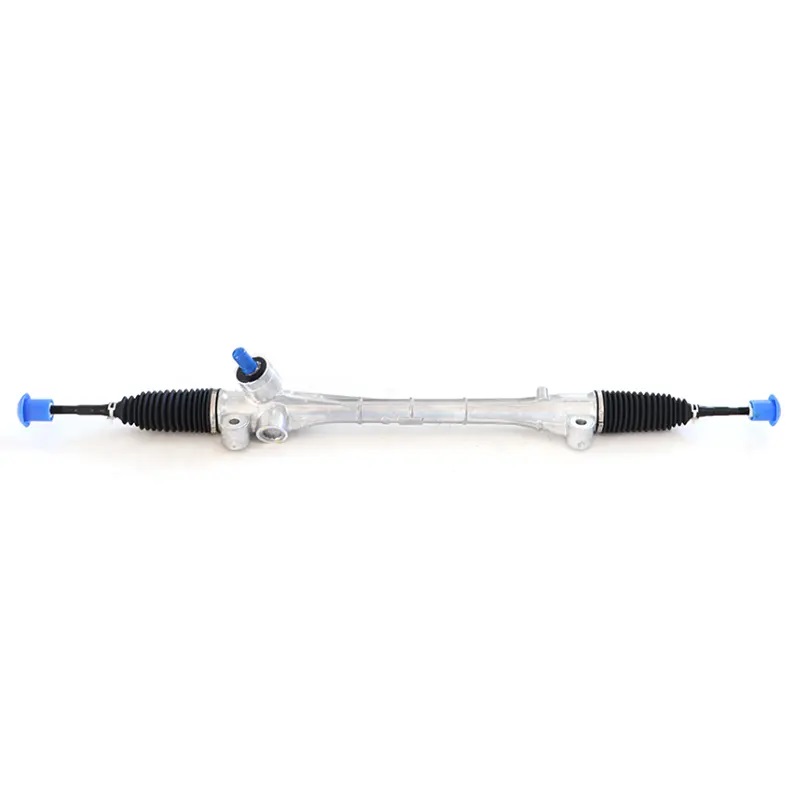Mastering Precision: The Role of Rack and Pinion in Elevating Vehicle Handling and Maneuverability
2023-12-28
Introduction
In the realm of automotive engineering, the rack and pinion steering system stands as a linchpin, orchestrating the dance of wheels and chassis with precision. In this blog, we delve into the pivotal role played by the rack and pinion system in shaping the overall handling and maneuverability of a vehicle, unraveling the secrets behind its contribution to the driving experience.
1. Responsive and Immediate Steering:
The rack and pinion system is renowned for its direct and immediate response to steering inputs. As the driver turns the steering wheel, the linear motion of the rack translates seamlessly into the lateral movement of the front wheels. This responsiveness enhances the driver's ability to navigate turns and corners with confidence.
2. Consistent Steering Ratio:
One of the key features that elevates the handling of a vehicle equipped with a rack and pinion system is the consistent steering ratio. Throughout the range of motion, the relationship between the rotation of the steering wheel and the lateral movement of the front wheels remains uniform. This consistency provides a predictable and intuitive feel, allowing the driver to precisely control the direction of the vehicle.
3. Enhanced Maneuverability:
The simplicity of the rack and pinion design contributes to the overall maneuverability of the vehicle. The direct translation of steering inputs into wheel movement means that the vehicle responds promptly to changes in direction. This enhanced maneuverability is particularly advantageous in urban settings, tight parking spaces, and situations that demand quick adjustments.
4. Self-Centering Feature:
The rack and pinion system possesses a self-centering feature, meaning that after completing a turn, the wheels naturally return to the straight-ahead position. This inherent quality promotes stability and aids in maintaining a straight course, reducing the need for constant steering corrections.
5. Efficient Power Steering Integration:
Many modern vehicles equipped with rack and pinion systems also feature power steering, further enhancing the overall handling experience. Power steering provides additional assistance, making it easier for the driver to turn the wheel, especially at low speeds. This integration combines the benefits of precision with enhanced ease of use.
6. Stable Alignment:
The synchronized movement of the front wheels facilitated by the rack and pinion system contributes to stable wheel alignment. Proper alignment is essential for even tire wear and ensures that the vehicle maintains a straight course without veering to one side.
7. Reduced Steering Play:
Steering play, the degree to which the steering wheel can be turned without initiating movement in the wheels, is minimized in a well-maintained rack and pinion system. This reduction in play enhances the driver's sense of control, allowing for more accurate and deliberate steering.
8. Improved Driver Confidence:
The sum of these contributions results in an overall improvement in driver confidence. The driver feels connected to the road, empowered to navigate various road conditions and challenges with a sense of assurance. This enhanced confidence is particularly valuable during dynamic driving situations or when faced with sudden maneuvers.
Conclusion:
In the grand symphony of vehicle dynamics, the rack and pinion system plays the role of a maestro, conducting the harmony between driver and machine. Its contribution to handling and maneuverability is evident in the fluidity of turns, the precision of steering inputs, and the overall responsiveness of the vehicle. As you grasp the wheel of a vehicle equipped with a rack and pinion system, you're not just steering; you're experiencing the fusion of engineering brilliance and the artistry of driving.



